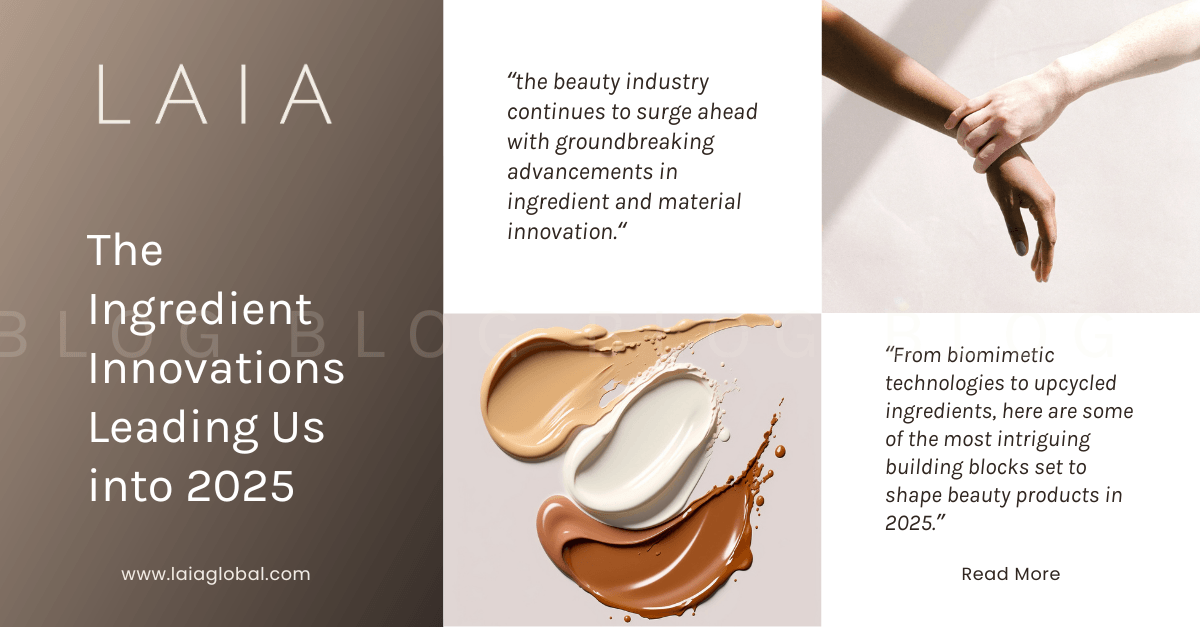The Ingredient Innovations Leading Us into 2025
As we close 2024, the beauty industry continues to surge ahead with groundbreaking
advancements in ingredient and material innovation. These innovations are not just
reshaping product formulations but also how brands approach sustainability, efficiency, and efficacy. From biomimetic technologies to upcycled ingredients, here are some of the most intriguing building blocks set to shape beauty products in 2025.
1. Coffee Oil-Sourced Surfactants
Sustainability meets functionality with coffee oil-sourced surfactants. Extracted from
upcycled coffee grounds, these surfactants offer an eco-friendly alternative to traditional petrochemical-based options. For example, startups like Kao Corporation have pioneered the use of coffee oil in surfactant formulations, demonstrating excellent sustainability and performance. They boast excellent foaming properties, making them ideal for shampoos and body washes while reducing environmental impact by repurposing waste materials.
2. AI-Built Fragrance Molecules
Artificial intelligence is revolutionizing fragrance creation. By analyzing molecular data and consumer preferences, AI is helping to design novel fragrance molecules that are more sustainable and customizable. Firmenich, for instance, has been leveraging AI to create innovative scent compositions, combining cutting-edge algorithms with decades of fragrance expertise. These innovations reduce the need for natural resources while offering unique,highly tailored scent profiles.
3. Biomimetic Technologies
Inspired by nature, biomimetic ingredients are engineered to replicate the skin’s natural
structures and functions. These technologies are making way for advanced skincare
solutions that enhance hydration, repair damage, and improve barrier function. We are
already seeing biomimetic peptides and lipids to take center stage in anti-aging and sensitive skin formulations.
4. Upcycled Ingredients
The zero-waste movement has driven a surge in upcycled ingredients derived from food and agricultural byproducts. From fruit seeds to vegetable peels, these materials are being transformed into potent skincare actives and exfoliants. Not only do they minimize waste, but they also deliver high-performance benefits, such as antioxidant protection and exfoliation.
5. Fermentation-Derived Actives
Fermentation continues to create new possibilities in beauty. For instance, the fermentation of yeast and bacteria has been shown to produce bioavailable hyaluronic acid, as demonstrated in research from the Journal of Cosmetic Science, highlighting its ability to enhance skin hydration and elasticity. This process allows microorganisms to produce highly bioavailable and potent actives, including hyaluronic acid, ceramides, and amino acids. Fermentation-derived ingredients are celebrated for their purity, efficacy, and ability to enhance skin health with minimal environmental impact.
6. Alternative Emollients and Silicones
To address environmental concerns surrounding silicones, innovators are developing bio-based and biodegradable alternatives. These next-generation emollients deliver the same silky feel and spreadability without compromising biodegradability or sustainability. Look out for plant-derived options that mimic traditional silicones’ texture and performance.
7. Natural and Biodegradable Colorants
As consumers demand cleaner makeup, natural and biodegradable colorants are gaining traction. Derived from sources like algae, beetroot, and turmeric, these pigments are not only safer for the skin but also environmentally friendly, breaking down without leaving harmful residues. For example, beetroot extract is commonly used in natural lip and cheek tints for its vibrant hue and biodegradability, as seen in brands like Ere Perez and Ilia.
8. Climate-Resilient Ingredients
With climate change impacting ingredient availability, Resilient crops such as jojoba and moringa are becoming key players. Brands are incorporating jojoba oil for its hydrating and skin-barrier-supporting properties, while moringa oil is being for its antioxidant-rich profile and sustainable cultivation practices. These hardy plants thrive in challenging environments, offering reliable sources of oils and actives while promoting sustainable farming practices in arid regions.
Looking Ahead
The beauty industry’s commitment to innovation is driving a future where sustainability and performance go hand in hand. By embracing these ingredient advancements, brands cancreate products that resonate with environmentally conscious consumers while pushing the boundaries of efficacy.
As Laia Beauty welcomes 2025, it’s clear that these innovations are not just trends—they represent a fundamental shift towards a greener, smarter, and more inclusive beauty industry.



